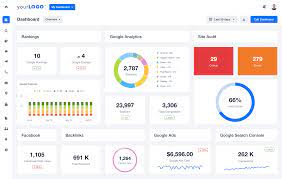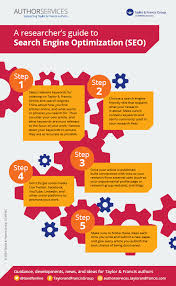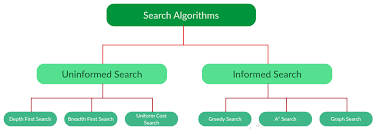SEO Performance Analytics: Unleashing the Power of Data to Drive Success
In today’s digital landscape, search engine optimization (SEO) is crucial for businesses looking to thrive online. However, implementing SEO strategies alone is not enough. To truly maximize your efforts and achieve sustainable growth, you need to harness the power of SEO performance analytics.
SEO performance analytics refers to the process of collecting, analyzing, and interpreting data related to your website’s SEO efforts. It provides valuable insights into how well your website is performing in search engine results pages (SERPs), identifies areas for improvement, and helps you make data-driven decisions.
One of the key benefits of SEO performance analytics is that it allows you to track your website’s visibility and rankings across various search engines. By monitoring your keyword positions over time, you can identify trends and patterns that can inform your optimization strategies. This data enables you to focus on high-performing keywords while identifying opportunities for growth.
Additionally, SEO performance analytics provides valuable information about user behavior on your website. Metrics such as bounce rate, time on page, and conversion rates help you understand how visitors are interacting with your site. Armed with this knowledge, you can optimize user experience, improve engagement, and increase conversions.
Furthermore, by tracking organic traffic sources through analytics tools like Google Analytics or similar platforms, you can gain insights into which channels are driving the most qualified traffic to your site. This knowledge allows you to allocate resources effectively and invest in the channels that yield the best results.
Another critical aspect of SEO performance analytics is competitor analysis. By benchmarking your website against competitors in terms of rankings, keywords targeted, and backlink profiles, you gain a deeper understanding of where you stand in the market. This information helps identify gaps in your strategy and uncover opportunities for growth.
Implementing an effective SEO performance analytics strategy requires a combination of technical expertise and a comprehensive understanding of key metrics. It’s essential to set up tracking tools correctly, establish clear goals, and regularly review and analyze the data to make informed decisions.
To get started with SEO performance analytics, consider the following steps:
- Define your key performance indicators (KPIs): Determine the metrics that align with your business goals, such as organic traffic growth, keyword rankings, or conversion rates.
- Set up tracking tools: Install analytics tools like Google Analytics or other SEO analytics platforms to collect relevant data about your website’s performance.
- Regularly review and analyze data: Establish a routine for reviewing your analytics data to identify trends, patterns, and areas for improvement. This can be done weekly, monthly, or quarterly depending on your needs.
- Take action based on insights: Use the insights gained from your analysis to optimize your SEO strategy. This may involve adjusting keyword targeting, improving website content, or refining technical aspects of your site.
- Monitor progress and adapt: Continuously monitor the impact of your optimizations and make necessary adjustments along the way. SEO is an ongoing process that requires constant monitoring and adaptation.
In conclusion, SEO performance analytics is a powerful tool that can unlock the full potential of your website’s SEO efforts. By leveraging data-driven insights, you can enhance visibility in search results, improve user experience, outperform competitors, and achieve long-term success online. Embrace the power of SEO performance analytics today and watch as it transforms your digital presence.
5 Commonly Asked Questions about SEO Performance Analytics
- How do I track the performance of my SEO efforts?
- What are the key metrics to monitor in SEO performance analytics?
- How can I improve my website’s visibility in search engine rankings?
- What tools or platforms should I use for SEO performance analytics?
- How can I use SEO performance analytics to identify areas for improvement and optimize my strategy?
How do I track the performance of my SEO efforts?
Tracking the performance of your SEO efforts is crucial to understand the impact of your strategies and make data-driven decisions. Here are some key steps to help you track and measure your SEO performance effectively:
- Set Clear Goals: Before you start tracking, define specific goals that align with your business objectives. Examples could include increasing organic traffic, improving keyword rankings, or boosting conversion rates.
- Use Analytics Tools: Implement a robust analytics tool like Google Analytics on your website. It provides valuable insights into various metrics, including organic traffic, user behavior, conversions, and more. Ensure that the tracking code is correctly installed on all relevant pages.
- Monitor Keyword Rankings: Keep track of how your target keywords are performing in search engine results pages (SERPs). You can use tools like Google Search Console or third-party SEO software to monitor keyword rankings over time and identify any fluctuations or trends.
- Analyze Organic Traffic: Regularly review the organic traffic data in your analytics tool to understand how visitors are finding and accessing your website through search engines. Look for patterns, spikes, or declines in traffic and correlate them with any changes made to your SEO strategy.
- Measure User Engagement Metrics: Pay attention to user engagement metrics such as bounce rate, time on page, and pages per session. These metrics provide insights into how well visitors are engaging with your content and whether they find it valuable.
- Track Conversion Rates: If your website has specific conversion goals (e.g., purchases, form submissions), track the conversion rates associated with organic traffic. This helps you assess the effectiveness of your SEO efforts in driving desired actions from visitors.
- Monitor Backlink Profiles: Keep an eye on the quality and quantity of backlinks pointing to your website. Backlinks play a significant role in SEO performance and can impact rankings. Tools like Ahrefs or Moz can help you analyze backlink profiles and identify opportunities for improvement.
- Benchmark Against Competitors: Conduct regular competitor analysis to understand how your website compares to others in your industry. Evaluate their rankings, keyword targeting, and backlink profiles. This analysis can help you identify areas where you can outperform competitors.
- Regularly Review and Analyze Data: Set aside dedicated time to review your analytics data on a regular basis. This could be weekly, monthly, or quarterly, depending on the scale of your SEO efforts. Look for trends, patterns, and areas for improvement based on the data.
- Adjust Strategies Accordingly: Based on the insights gained from your analysis, make informed decisions and adjust your SEO strategies accordingly. This could involve refining keyword targeting, optimizing website content, improving technical aspects of your site, or adapting to changes in search engine algorithms.
Remember that SEO tracking is an ongoing process that requires continuous monitoring and adaptation. By consistently tracking and analyzing the performance of your SEO efforts, you can optimize your strategies effectively and drive long-term success in organic search rankings.
What are the key metrics to monitor in SEO performance analytics?
When it comes to monitoring SEO performance analytics, several key metrics provide valuable insights into the effectiveness of your strategies. Here are some essential metrics to consider:
- Organic Traffic: This metric measures the number of visitors who reach your website through organic search results. It indicates the overall visibility and reach of your site in search engines.
- Keyword Rankings: Tracking keyword rankings allows you to monitor how well your website is performing for specific keywords or phrases. It helps identify opportunities for improvement and assess the impact of optimization efforts.
- Click-Through Rate (CTR): CTR represents the percentage of users who click on your website’s link in search results after seeing it. A high CTR indicates that your title tags and meta descriptions are compelling and relevant to users’ search queries.
- Bounce Rate: Bounce rate measures the percentage of visitors who leave your website after viewing only one page. A high bounce rate may indicate a poor user experience or irrelevant content, highlighting areas that need improvement.
- Time on Page: This metric shows how much time visitors spend on each page of your website on average. It helps assess user engagement and content quality—longer average time on page suggests higher engagement.
- Conversion Rate: Conversion rate tracks the percentage of visitors who complete a desired action, such as making a purchase, filling out a form, or subscribing to a newsletter. It measures the effectiveness of your website in driving desired outcomes.
- Backlinks: Backlinks are links from other websites that point to yours. Monitoring backlinks helps you understand the quality and quantity of external sites linking to your content, which is an important factor in search engine rankings.
- Page Load Speed: Page load speed refers to how quickly your web pages load for users. Slow-loading pages can negatively impact user experience and SEO performance, so monitoring this metric is crucial.
- Mobile Responsiveness: With mobile devices accounting for a significant portion of internet traffic, ensuring your website is mobile-friendly is essential. Monitoring metrics related to mobile responsiveness helps identify any issues that may impact user experience.
- Indexing and Crawling: Monitoring the indexing and crawling status of your website ensures that search engines can access and understand your content effectively. This metric helps identify any technical issues that may hinder search engine visibility.
Remember, the specific metrics you monitor may vary depending on your business goals, industry, and website type. It’s important to focus on metrics that align with your objectives and regularly review and analyze them to make informed decisions for optimizing your SEO strategies.
How can I improve my website’s visibility in search engine rankings?
Improving your website’s visibility in search engine rankings is a crucial step in driving organic traffic and attracting potential customers. Here are some effective strategies to enhance your website’s visibility:
- Conduct Keyword Research: Start by identifying relevant keywords and phrases that your target audience is likely to use when searching for products or services similar to yours. Use keyword research tools to find high-volume, low-competition keywords that align with your content.
- Optimize On-Page Elements: Ensure that your website’s on-page elements, such as title tags, meta descriptions, headers, and URLs, include the targeted keywords. Make sure these elements are concise, descriptive, and compelling to encourage click-throughs from search engine results pages (SERPs).
- Create High-Quality Content: Develop informative, engaging, and valuable content that addresses the needs and interests of your target audience. Incorporate relevant keywords naturally throughout your content while focusing on delivering a great user experience.
- Improve Website Speed: Page load speed is a critical factor in both user experience and search engine rankings. Optimize your website’s performance by minimizing file sizes, leveraging caching techniques, and choosing a reliable hosting provider.
- Enhance Mobile Responsiveness: With the increasing use of mobile devices for online searches, it’s essential to have a mobile-friendly website. Ensure that your site is responsive across different screen sizes and loads quickly on mobile devices.
- Build High-Quality Backlinks: Earn backlinks from reputable websites within your industry or niche. Focus on quality rather than quantity when it comes to backlinks as search engines value links from authoritative sources.
- Optimize for Local SEO: If you have a physical business location or serve specific geographic areas, optimize your website for local SEO. This includes creating Google My Business listings, including location-specific keywords in your content, and obtaining local citations.
- Utilize Social Media: Leverage social media platforms to promote your content, engage with your audience, and drive traffic to your website. Social signals can indirectly impact search engine rankings by increasing brand visibility and generating backlinks.
- Monitor and Analyze: Regularly monitor your website’s performance using analytics tools to gain insights into user behavior, traffic sources, and keyword rankings. This data will help you identify areas for improvement and adjust your strategies accordingly.
- Stay Updated with SEO Trends: SEO is an ever-evolving field, so it’s crucial to stay informed about the latest trends and algorithm updates. Follow reputable industry blogs, attend webinars or conferences, and adapt your strategies accordingly.
Remember that improving search engine visibility takes time and consistent effort. By implementing these strategies and continuously optimizing your website, you can increase its visibility in search engine rankings and attract a larger audience to your online presence.
What tools or platforms should I use for SEO performance analytics?
When it comes to SEO performance analytics, there are several tools and platforms available that can help you track and analyze data effectively. Here are some popular options:
- Google Analytics: Google Analytics is a widely used web analytics tool that provides comprehensive insights into website traffic, user behavior, and conversion rates. It offers valuable SEO metrics such as organic search traffic, keyword performance, bounce rate, and more.
- Google Search Console: Google Search Console is a free tool provided by Google that allows you to monitor your website’s presence in search results. It provides data on search queries, impressions, click-through rates (CTRs), and helps identify issues affecting your site’s visibility.
- Moz Pro: Moz Pro is an all-in-one SEO toolset that offers features like keyword research, rank tracking, site audits, backlink analysis, and more. It provides actionable insights to improve your website’s SEO performance.
- SEMrush: SEMrush is a popular SEO software suite that offers a wide range of tools for keyword research, competitor analysis, rank tracking, backlink analysis, content optimization, and more. It provides comprehensive data to help you make informed decisions.
- Ahrefs: Ahrefs is another powerful SEO toolset that focuses on backlink analysis and competitor research. It offers features like site audits, keyword tracking, content analysis, and helps with link building strategies.
- Bing Webmaster Tools: Bing Webmaster Tools is a free platform provided by Microsoft that allows you to monitor your website’s performance on the Bing search engine. It offers insights into crawling errors, keyword rankings on Bing search results pages (SERPs), and other valuable data.
- Majestic SEO: Majestic SEO specializes in backlink analysis and provides detailed information about the quality of backlinks pointing to your website or your competitors’ sites.
- Serpstat: Serpstat is an all-in-one SEO platform that offers keyword research, rank tracking, backlink analysis, site audits, and competitor analysis. It provides valuable insights to optimize your website’s performance.
These are just a few examples of the tools and platforms available for SEO performance analytics. The choice of tools depends on your specific needs, budget, and level of expertise. It’s recommended to explore different options and find the ones that best fit your requirements.
How can I use SEO performance analytics to identify areas for improvement and optimize my strategy?
Using SEO performance analytics can provide valuable insights into areas for improvement and help optimize your strategy. Here are some key steps to follow:
- Analyze keyword rankings: Review your keyword rankings regularly to identify which keywords are performing well and which ones may need improvement. Focus on optimizing poorly performing keywords by refining your content, improving on-page optimization, or building relevant backlinks.
- Monitor organic traffic trends: Track the organic traffic to your website over time and identify any significant changes or patterns. If you notice a decline in traffic, investigate potential causes such as algorithm updates, technical issues, or changes in user behavior. By pinpointing the root cause, you can take corrective actions to regain lost traffic.
- Assess user engagement metrics: Dive into user engagement metrics like bounce rate, time on page, and conversion rates. High bounce rates may indicate a mismatch between user intent and your content, while low conversion rates could suggest issues with your website’s usability or call-to-action elements. Use this data to improve the user experience and encourage visitors to take desired actions.
- Track backlink profiles: Analyze your backlink profile to assess the quality and quantity of incoming links to your site. Identify any toxic or low-quality backlinks that could be harming your SEO efforts and take steps to remove or disavow them. Additionally, look for opportunities to build high-quality backlinks from authoritative websites relevant to your industry.
- Conduct competitor analysis: Compare your website’s performance against that of your competitors using SEO performance analytics tools. Identify areas where competitors are outperforming you in terms of rankings, organic traffic, or keyword targeting strategies. This analysis can help uncover new opportunities for improvement or highlight gaps in your current strategy that need attention.
- Utilize data-driven content optimization: Leverage analytics data to optimize existing content or create new content that aligns with user intent and search demand. Identify high-performing pages and replicate their success by expanding on related topics or updating outdated information. Use keyword research and analytics data to guide your content creation and ensure it resonates with your target audience.
- Test and measure changes: Implement changes based on the insights gained from your SEO performance analytics, but make sure to track their impact. Monitor how these changes affect keyword rankings, organic traffic, and user engagement metrics. This iterative process allows you to refine your strategy over time based on data-backed results.
Remember, SEO performance analytics is an ongoing process. Regularly review and analyze the data, adapt your strategy accordingly, and keep monitoring the impact of your optimizations. By leveraging the power of data-driven insights, you can continuously improve your website’s SEO performance and drive long-term success online.




